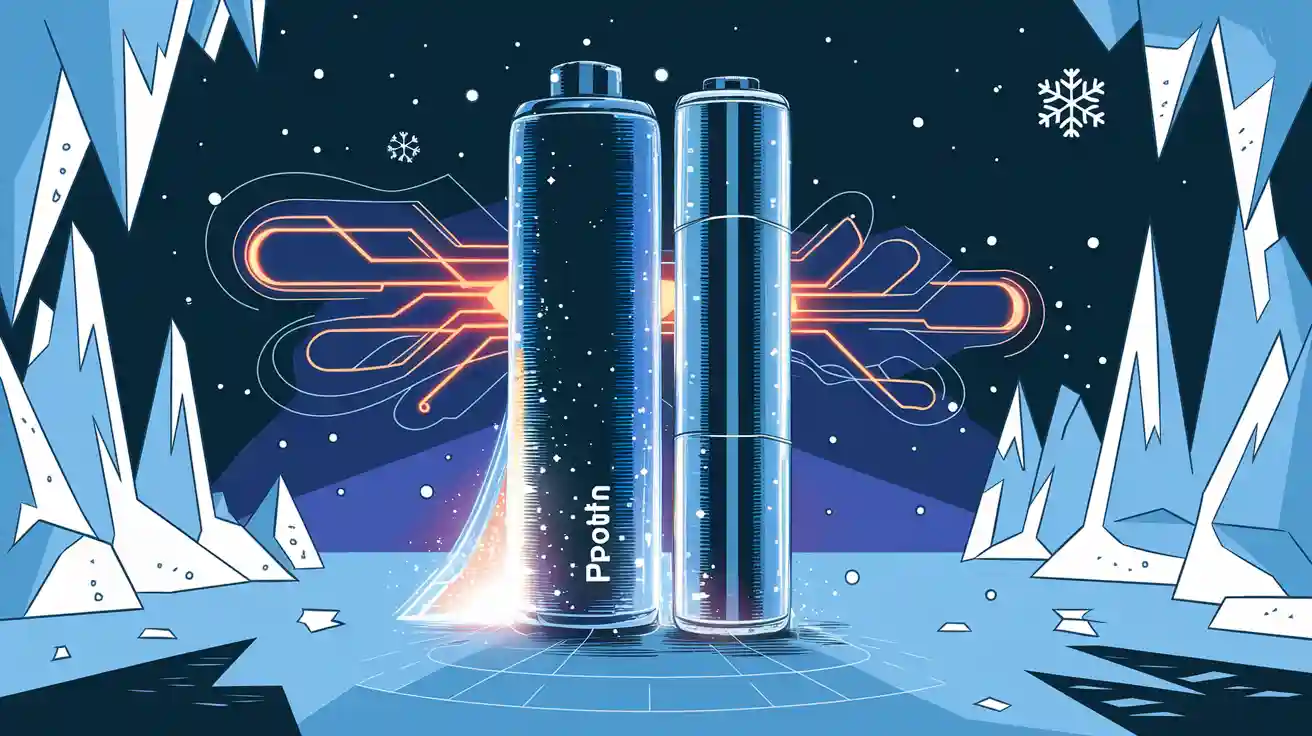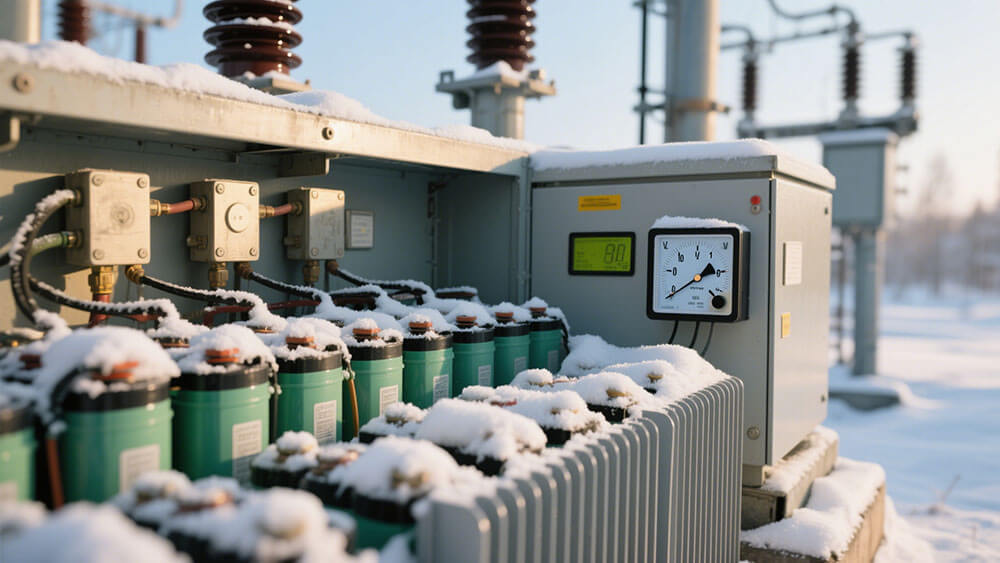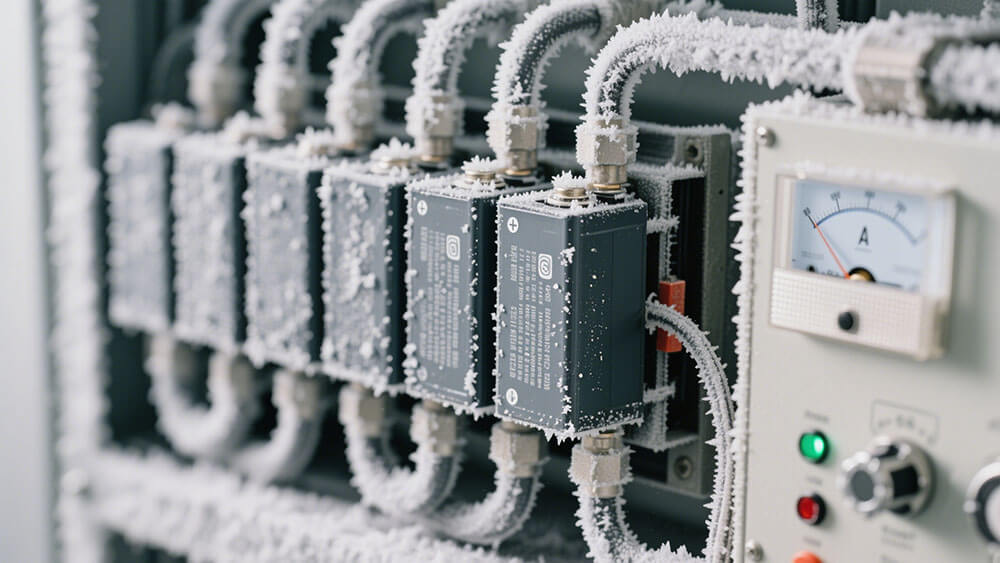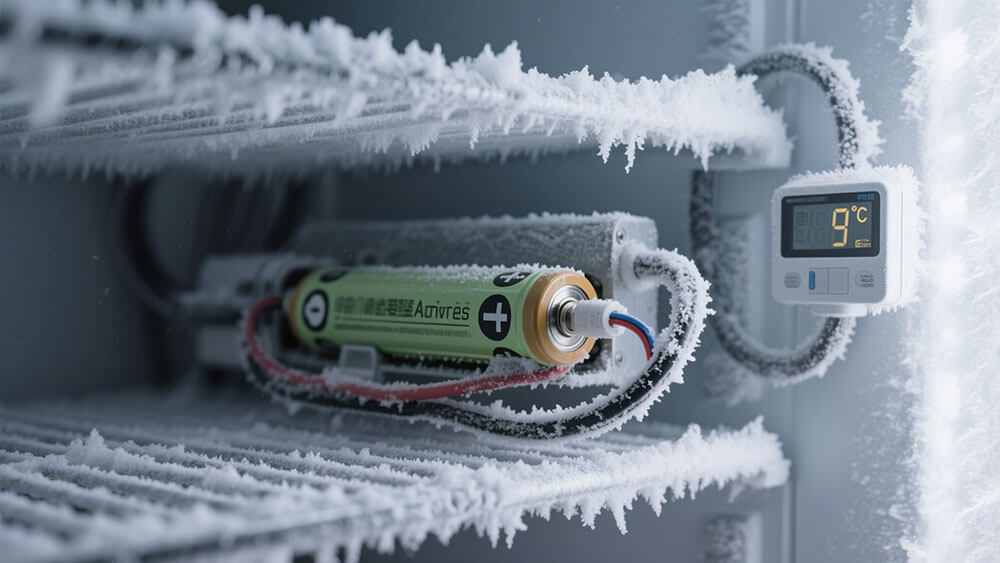
Cold climates challenge lithium-ion batteries, reducing their efficiency and reliability. These batteries can lose up to 50% of their capacity at -30°C and deliver only 50-70% of their rated performance in extreme cold. Proton batteries offer a promising alternative. Their water-based chemistry ensures consistent energy output in low temperatures, making them ideal for applications requiring robust performance. By complementing lithium-ion systems, proton batteries unlock new possibilities for energy storage in colder environments.
Key Takeaways
Proton batteries work better than lithium-ion ones in cold weather. Their water-based design keeps energy steady, even when it’s freezing.
Lithium-ion batteries have trouble in the cold. They lose power and can be unsafe. Proton batteries fix these problems, making them safer for storing energy.
Using proton batteries helps the planet. They use common materials like carbon and water, which are easier to recycle and better for the environment.
Part 1: Why Lithium-Ion Batteries Struggle in Cold Weather

1.1 Reduced Chemical Reaction Rates in Low Temperatures
Cold weather significantly slows down the chemical reactions inside lithium-ion batteries. When temperatures drop, the rate of lithium-ion transfer decreases, which limits the current flow and reduces the battery’s capacity. This happens because the intercalation reaction, where lithium ions move between the electrodes, becomes less efficient. Additionally, lithium plating—a process where lithium deposits form on the anode—occurs more frequently in freezing conditions. This increases the resistance of the electrolyte and further restricts the movement of ions. These findings highlight why lithium-ion batteries struggle to maintain efficiency in cold environments.
1.2 Decreased Energy Output and Capacity
Low temperatures also reduce the energy output and capacity of lithium-ion batteries. As the electrolyte becomes more viscous in freezing conditions, ion movement slows down, which disrupts electrochemical reactions. This makes it harder for the battery to deliver peak power levels. For users, this means devices powered by lithium-ion batteries may not perform as expected in cold weather.
Research has quantified this decline in performance:
Cold temperatures hinder ion movement, leading to efficiency drops.
Charging in freezing conditions can cause unstable lithium plating, increasing the risk of internal short circuits.
The battery’s ability to deliver power decreases, resulting in lower capacity and output.
The capacity and discharge of lithium batteries rates vary significantly with temperature, emphasizing the challenges lithium-ion batteries face in cold climates.
1.3 Safety and Reliability Concerns in Extreme Cold
Safety becomes a critical concern when lithium-ion batteries operate in freezing temperatures. The formation of lithium plating during charging not only reduces efficiency but also increases the risk of internal short circuits. This can lead to thermal runaway, a dangerous condition where the battery overheats and potentially catches fire.
Cold weather also affects the structural integrity of the battery. The freezing of the electrolyte can cause physical stress on the battery components, leading to cracks or leaks. These issues compromise the reliability of the battery, making it less suitable for applications in extreme cold.
For energy storage systems in cold climates, these limitations pose significant challenges. However, proton batteries offer a promising solution. Their water-based chemistry and robust performance in low temperatures make them a safer and more reliable alternative for sustainable energy storage.
Part 2: How Proton Batteries Work and Their Cold Weather Advantages

2.1 Water-Based Chemistry and Proton Transfer Mechanism
Proton batteries rely on a unique water-based chemistry that sets them apart from traditional lithium-ion systems. Instead of using lithium ions, these batteries utilize hydrogen protons (H⁺) as charge carriers. During the charging process, water molecules split into oxygen and protons through electrolysis. The protons are stored in a porous carbon electrode, eliminating the need for high-pressure hydrogen storage.
When you discharge a proton battery, the stored protons react with oxygen from the air to form water, releasing energy in the process. This reversible reaction occurs within a proton exchange membrane (PEM), which facilitates the movement of protons between electrodes. The simplicity of this mechanism ensures consistent performance, even in sub-zero temperatures.
Tip: The proton transfer mechanism has demonstrated remarkable efficiency in laboratory tests. It enables rapid energy storage, extends the battery’s lifespan, and maintains functionality under freezing conditions.
2.2 Superior Low-Temperature Performance of Proton Batteries
Proton batteries excel in cold climates where lithium-ion systems often falter. Their water-based electrolyte remains stable and functional at low temperatures, unlike the organic solvents used in lithium-ion batteries that tend to crystallize or become viscous. This stability ensures uninterrupted proton movement, allowing the battery to deliver reliable energy output.
Laboratory tests comparing proton batteries with lithium-ion batteries highlight this advantage. Proton batteries consistently outperform lithium-ion systems in sub-zero conditions. The use of water as an electrolyte not only enhances low-temperature performance but also contributes to safety and environmental benefits. For applications requiring robust energy storage in cold climates, proton batteries offer a dependable solution.
2.3 Environmental and Safety Benefits of Proton Battery Technology
Proton batteries prioritize sustainability and safety, making them an ideal choice for modern energy storage needs. Unlike lithium-ion batteries, which rely on rare metals like cobalt and nickel, proton batteries use abundant materials such as carbon and water. This reduces the environmental impact of battery production and simplifies recycling processes.
The absence of toxic or flammable components further enhances the safety of proton batteries. Solid-state proton storage eliminates the risks associated with high-pressure hydrogen or volatile electrolytes. Additionally, the rapid movement of protons through hydrogen-bond networks boosts energy density and power output, ensuring efficient performance in both room temperature and cold climates.
Proton batteries operate effectively in sub-zero conditions, supporting sustainable energy storage.
Their all-organic design minimizes environmental harm and simplifies end-of-life disposal.
Hydrogen-bond networks facilitate fast proton movement, enhancing energy efficiency.
By choosing proton batteries, you contribute to a greener future while benefiting from reliable and safe energy storage solutions.
Part 3: Comparing Proton Batteries and Lithium-Ion Batteries

3.1 Cold Weather Efficiency and Reliability
Proton batteries outperform lithium-ion batteries in cold weather due to their water-based chemistry. While lithium-ion batteries experience reduced efficiency as their organic electrolytes crystallize, proton batteries maintain stable performance. This makes them ideal for energy storage in sub-zero environments. For example, in regions with harsh winters, proton batteries can reliably power critical systems without the risk of capacity loss.
Lithium-ion batteries also face safety challenges in freezing conditions. Lithium plating during charging increases the risk of short circuits and thermal runaway. Proton batteries eliminate this concern by using solid-state proton storage, which enhances safety and reliability. This feature makes them a dependable choice for applications in extreme climates, such as off-grid solar systems in Alaska or remote infrastructure projects.
3.2 Energy Density and Scalability in Energy Storage Applications
Proton batteries offer promising scalability for large-scale energy storage. Researchers at RMIT University are developing megawatt-scale proton battery systems, showcasing their potential for industrial applications. Their high safety and fast charging capabilities further enhance scalability, making them suitable for grid-level energy storage.
In contrast, lithium-ion batteries face challenges in scaling due to cost and safety concerns. For instance, the use of rare metals like cobalt increases production costs, while thermal management becomes more complex in larger systems. Proton batteries, on the other hand, rely on abundant materials like carbon and water, reducing costs as production scales. Zhao, a leading researcher, noted that scaling up proton battery manufacturing could significantly lower costs, making them a competitive alternative for energy storage solutions.
3.3 Integration Potential with Existing Lithium-Ion Systems
Proton batteries can complement lithium-ion systems in hybrid configurations, enhancing overall performance. In electric vehicles (EVs), hybrid systems can use proton batteries to power heaters for lithium cells, extending driving range in cold regions like Norway. Similarly, off-grid solar systems can integrate proton batteries to store energy efficiently at night when lithium-ion batteries struggle in freezing temperatures.
Drones and remote equipment also benefit from this integration. Proton batteries ensure reliable startup and maintain essential systems in extreme cold, where lithium-ion batteries may falter. By combining the strengths of both technologies, you can achieve a more robust and versatile energy storage solution tailored to specific needs.
Tip: If you’re considering custom energy storage solutions for industrial or infrastructure projects, explore hybrid systems that leverage the unique advantages of proton and lithium-ion batteries.
Lithium-ion batteries face significant challenges in cold weather, including reduced efficiency and safety risks. Proton batteries overcome these limitations with their water-based chemistry, ensuring reliable performance in freezing conditions. Their ability to maintain consistent energy output makes them a promising energy storage solution for applications in harsh climates.
Proton batteries hold immense potential for industries like electric vehicles and renewable energy systems. Their scalability and environmental benefits position them as a sustainable choice for powering critical systems in cold regions. By adopting this innovative technology, you can enhance energy reliability while contributing to a greener future.
Note: Explore custom solutions tailored to your needs by visiting Large Power’s consultation page.
FAQ
1. What makes proton batteries better for cold weather than lithium-ion batteries?
Proton batteries use water-based electrolytes, which remain stable in freezing temperatures. Their reliance on hydrogen ions ensures consistent energy output in cold climates.
2. Can proton batteries replace lithium-ion batteries entirely?
Proton batteries complement lithium-ion systems rather than replacing them. Their unique chemistry enhances performance in cold weather and supports hybrid energy storage solutions.
3. Are rechargeable proton batteries safe for everyday use?
Yes, rechargeable proton batteries use solid-state proton storage, eliminating risks like thermal runaway. Their design prioritizes safety and environmental sustainability.






